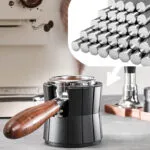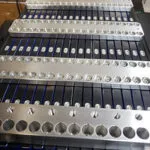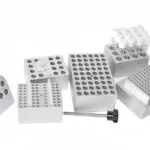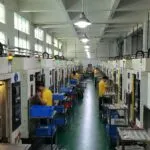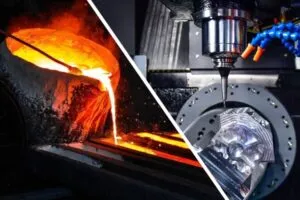The debate over whether 304 stainless steel outperforms 316 in terms of machinability is a topic of keen interest among manufacturers and metalworking professionals. Both varieties of stainless steel are essential components in various industries, such as food processing, aerospace, and medical devices. This section will delve into the concept of stainless steel machinability, shedding light on the specific contexts where each type is utilized. Understanding these details is crucial as we explore how machinable stainless steel variants behave under different machining conditions, particularly in CNC machining metal applications.
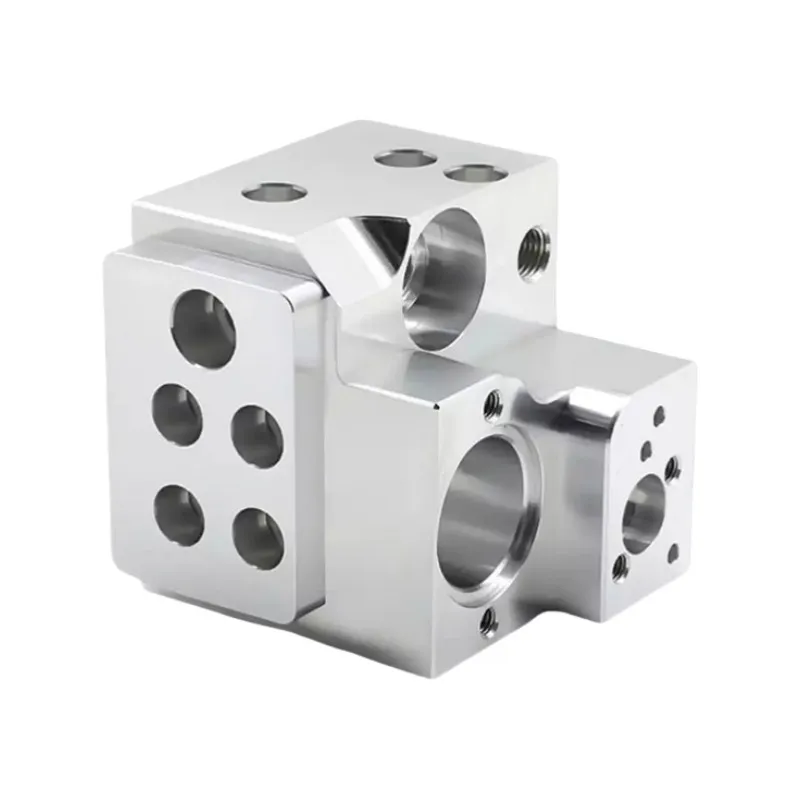
Understanding Stainless Steel Machinability
Machinability refers to the ease with which a material can be machined into a specific shape. It plays a crucial role in manufacturing processes, particularly with stainless steel. Understanding the machinability definition helps in evaluating how different grades of stainless steel perform when subjected to various machining operations.
Definition of Machinability
The machinability definition includes various parameters that affect how well a material can be cut, drilled, or shaped. These parameters encompass factors such as tool wear, surface finish, and the amount of power required during machining. A higher machinability rating indicates that a material is easier to machine, resulting in lower manufacturing costs and improved processing times.
Factors Affecting Stainless Steel Machining
Several factors affecting machining determine the overall machinability of stainless steel. Some key factors include:
- Material Hardness: Harder materials often lead to increased tool wear.
- Toughness: Tougher materials can cause difficulties such as chip formation and built-up edge.
- Thermal Conductivity: Effective heat dissipation helps improve tool life.
- Chemical Composition: The specific alloying elements in stainless steel can influence machinability ratings.
Machinability Rating Systems
Different systems provide standardized measures for stainless steel machining ratings. An example is the Taylor tool life equation, which evaluates performance during CNC machining. These systems help manufacturers select the right materials and parameters for efficiency on the production floor. Following a rating system can also improve tool life and machining quality.
Composition of 304 vs 316 Stainless Steel
The chemical composition of stainless steels plays a significant role in their functionality and performance in various applications. Understanding the differences between 304 stainless steel composition and 316 stainless steel makeup helps in determining their machinability and suitability for specific tasks. Each alloy features unique elements that influence its characteristics.
304 Stainless Steel Chemical Makeup
The 304 stainless steel composition primarily consists of iron, chromium (typically 18%), and nickel (around 8%). This balanced blend contributes to its excellent corrosion resistance and formability, making it a popular choice for many industries.
316 Stainless Steel Chemical Makeup
In contrast, 316 stainless steel makeup includes a similar foundation of iron, chromium (about 16%), and nickel (10%), but it also incorporates molybdenum (2-3%). The addition of molybdenum enhances its ability to withstand harsh environments, particularly those with chloride exposure.

Key Compositional Differences
One of the main distinctions lies in the presence of molybdenum in 316 stainless steel. This alloying element contributes to improved corrosion resistance but can have implications for machining processes compared to the standard 304 stainless steel composition. The specific percentages of each element directly affect flexibility and durability during fabrication.
Impact of Alloying Elements on Machinability
The alloying elements within both 304 and 316 stainless steels influence their machinability. While 304 is often easier to machine due to its lower alloy content, the presence of molybdenum in 316 presents challenges that may require specialized tools and techniques. Understanding these differences guides manufacturers in selecting the appropriate stainless steel for their machining applications.
Mechanical Properties Comparison
The mechanical properties of stainless steel play a vital role in its machinability. When comparing 304 and 316 stainless steels, several factors come into play, including hardness, strength, ductility in machining, and thermal conductivity. Understanding these properties enables manufacturers to make informed decisions during the machining process.
Hardness and Strength Profiles
In terms of hardness comparison, 304 stainless steel typically exhibits a lower hardness rating than 316. This can be attributed to their differing chemical compositions, where the addition of molybdenum in 316 contributes to enhanced strength. Both grades undergo work hardening, which affects their machining efficiency. It is essential to consider these properties when selecting tools and processes for machining.
Work Hardening Tendencies
Work hardening significantly impacts the machinability of these stainless steels. Both 304 and 316 exhibit increased hardness during machining, which can create challenges in maintaining cutting efficiency. Operators should adjust cutting speeds and tools accordingly to mitigate excessive wear and ensure consistent tool performance.
Thermal Conductivity Differences
Thermal conductivity varies between 304 and 316 stainless steels, influencing their response during machining. The lower thermal conductivity of 316 can lead to increased heat build-up during machining operations, affecting tool life and performance. Recognizing these differences allows for better heat management strategies during machining processes.
Ductility and Toughness Considerations
Ductility is another significant aspect of the mechanical properties of stainless steel. 304 stainless steel typically exhibits better ductility in machining compared to 316. This difference makes 304 a more suitable choice for applications requiring extensive forming and bending. Understanding these properties helps manufacturers choose the appropriate material based on specific project needs.
| Property | 304 Stainless Steel | 316 Stainless Steel |
|---|---|---|
| Hardness (Brinell) | 137 | 150 |
| Ultimate Tensile Strength (MPa) | 520 | 550 |
| Thermal Conductivity (W/m·K) | 16.2 | 14.9 |
| Ductility (%) | 45 | 40 |
Is 304 Better Than 316 for Machinability?
The comparison between 304 and 316 stainless steels reveals distinct machining characteristics that can significantly influence the outcomes in manufacturing processes. Analyzing factors such as cutting speed, tool wear, and chip formation provides valuable insights for selecting the appropriate alloy for specific machining tasks.
Direct Comparison of Machining Characteristics
When evaluating the machinability of 304 and 316 stainless steels, 304 typically exhibits superior performance. It allows for higher cutting speeds and produces chips more readily, which can improve overall efficiency in machining processes. Understanding these differences can aid operators in selecting the right material for their projects.
Cutting Speed Differences
In a cutting speed comparison, 304 stainless steel generally supports higher speeds than 316. This capability leads to reduced machining time, which can be critical in high-volume production environments. The increased cutting speed can enhance productivity, making 304 a preferred choice for many machinists.
Tool Wear Considerations
Tool wear in machining varies between the two grades. 316’s higher alloy content may result in more rapid tool degradation compared to 304. As operators consider tool life and replacement costs, they may find that machining 304 leads to longer tool life and fewer interruptions during operations.
Chip Formation Comparison
Effective chip formation in stainless steel plays a critical role in machining success. The chip formation in 304 tends to be more manageable than in 316, where chips can be more problematic. Optimized chip formation mitigates the risk of damaging tools and workpieces, further emphasizing the advantages of 304 in various machining applications.
| Characteristic | 304 Stainless Steel | 316 Stainless Steel |
|---|---|---|
| Cutting Speed | Higher | Lower |
| Tool Wear | Less Wear | More Wear |
| Chip Formation | Better Control | Less Control |
Free-Machining Grades of 304 and 316
Free-machining stainless steel grades bring significant enhancements to the machining process, particularly exemplified by the 304F and 316F variants. The integration of specific elements such as sulfur and selenium plays a crucial role in boosting stainless steel machinability.
304F and 316F Variants
The 304F and 316F grades are specialized formulations of traditional 304 and 316 stainless steels. By adding sulfur or selenium, these variants improve the machinability compared to their standard counterparts. This addition promotes smoother cutting and reduces the struggle often associated with machining stainless steel.
Sulfur and Selenium Additions
The enhancement of free-machining stainless steel is largely attributed to the incorporation of sulfur and selenium. These elements lower the friction during the cutting process, allowing tools to penetrate the material more effectively. This results in reduced wear on cutting tools and higher production rates.
Machinability Improvements
With the enhanced formulation of 304F and 316F, machinability sees marked improvements. This includes better chip formation, which is crucial for maintaining tool integrity. Such enhancements facilitate faster cutting speeds and greater efficiency when working with stainless steel components.
Trade-offs in Corrosion Resistance
While the improvements in machinability are evident, they come with certain trade-offs. The addition of sulfur or selenium can diminish the corrosion resistance of these free-machining grades compared to standard 304 and 316 stainless steels. This factor may influence the choice of material based on the specific applications that require robust corrosion behavior.
Machining Challenges with 304 Stainless Steel
Machining 304 stainless steel presents specific challenges that can impact overall efficiency and productivity. Understanding these challenges, particularly work hardening in machining, heat generation in cutting, and built-up edge formation, allows operators to devise effective strategies for optimal outcomes.
Work Hardening Issues
Work hardening in machining occurs when stainless steel is excessively deformed during processing, leading to increased hardness and toughness. This phenomenon makes it difficult to cut or shape the material effectively. Operators must manage cutting parameters carefully to minimize work hardening and maintain tool life.
Heat Generation During Cutting
Heat generation in cutting is another significant concern when machining 304 stainless steel. High temperatures can lead to thermal expansion and distortion of the material, which negatively affects the dimensional accuracy of the finished product. Using appropriate cooling methods and cutting speeds can help manage this heat, ensuring better results.
Built-up Edge Formation
Built-up edge formation is a common issue encountered during machining of 304 stainless steel. This occurs when material adheres to the cutting edge, resulting in poor surface finishes and increased tool wear. Employing suitable cutting parameters and selecting high-quality cutting tools can reduce the likelihood of built-up edges, leading to enhanced machining performance.
Recommended Solutions
To address these challenges, several solutions for machining stainless steel can be implemented:
- Select optimal cutting speeds based on the specific operation.
- Utilize high-performance coolants to mitigate heat generation during cutting.
- Choose cutting tools with appropriate coatings to minimize built-up edge formation.
Machining Challenges with 316 Stainless Steel
When engaging in machining challenges with 316 stainless steel, the presence of molybdenum plays a significant role in overall machinability. This alloying element affects various aspects of the machining process, such as chip formation and control, contributing to the unique challenges faced during operations.
Molybdenum Effect on Machinability
Molybdenum enhances the corrosion resistance of 316 stainless steel, but this benefit comes at a cost when machining. The increased toughness may lead to complications such as higher cutting forces, resulting in greater thermal generation and potential tool wear. Understanding this relationship is essential for optimizing machining processes.
Chip Formation and Control
Efficient chip control in machining 316 stainless steel requires attention to cutting parameters. Chips tend to be shorter and more difficult to manage, often leading to increased re-cutting. Effective strategies can mitigate this issue, allowing for more productive and safer machining environments.
Tool Wear Mechanisms
Tool wear is a prevalent concern when working with 316 stainless steel. The mechanical and thermal stresses imposed during the machining process can result in rapid tool degradation. Abrasive wear, adhesion, and diffusion are common mechanisms that contribute to tool failure. Monitoring these factors can lead to longer tool life and enhanced productivity.
Recommended Solutions
To overcome the machining challenges with 316 stainless steel, several strategies have been identified. Utilizing high-performance cutting tools with specialized coatings can decrease tool wear significantly. Additionally, employing adaptive machining techniques can optimize parameters like feed rate and cutting speed, further improving chip control and extending tool life.
Optimal Cutting Tools and Strategies
When machining stainless steel, selecting the right cutting tools greatly influences productivity and quality. The materials and coatings of tools serve as critical components that enhance performance and longevity. It is essential to consider various aspects, including geometry and machining strategies, to achieve optimal results while minimizing downtime.
Tool Materials and Coatings
Choosing suitable cutting tools for stainless steel involves evaluating different materials and tool coatings. High-speed steel (HSS) remains a popular choice due to its versatility. Carbide tools, known for their hardness, provide enhanced wear resistance and are ideal for heavy cutting operations. Advanced tool coatings, such as TiN, TiAlN, and diamond-like carbon (DLC), significantly improve tool life and reduce friction, proving beneficial in stainless steel machining.
Geometry Considerations
Tool geometry plays a vital role in cutting efficiency. Positive rake angles facilitate smoother cutting actions, reducing cutting forces. Additionally, selecting the right flank and clearance angles ensures optimal chip flow and reduces the risk of built-up edge formation. These factors help in improving the overall machining strategies employed for stainless steel components.
Tool Life Expectations
Understanding tool life expectations aids in planning operations effectively. High-quality cutting tools with appropriate coatings can exhibit extended life spans, commonly between 20% to 100% longer than uncoated alternatives. Regular monitoring and maintaining optimal cutting conditions significantly contribute to achieving impressive tool longevity in machining stainless steel.
High-Performance Machining Techniques
Implementing high-performance machining techniques enhances efficiency. Strategies such as high-speed machining, utilizing appropriate cutting speeds, and optimizing feed rates help achieve superior surface finishes along with improved material removal rates. Properly tuning these parameters ensures that tool wear is minimized, ultimately leading to greater productivity during the machining process.
Process-Specific Machining Parameters
When working with 304 and 316 stainless steel, it is crucial to understand the specific machining parameters for CNC operations. Each machining process, including turning operations, milling, drilling, and grinding, necessitates customized settings to optimize performance and efficiency. Tailoring these parameters effectively can significantly enhance the quality of the finished product.
Turning Operations
Turning operations require precise control of machining parameters for CNC to ensure optimal results. Recommended cutting speeds vary according to the specific alloy, with 304 stainless steel generally allowing higher speeds compared to 316. Feed rates should be adapted based on the tooling used and the desired finish, minimizing tool wear while maximizing production efficiency. Using sharp tools and optimizing depth of cut can further improve performance.
Milling Operations
Milling stainless steel involves its own set of challenges. Selecting the right tooling geometry and maintaining appropriate cutting conditions is necessary for effective machining. Higher cutting speeds can create better chip formation and reduce work hardening effects. Generally, a slower feed rate works well to ensure a smooth surface finish, especially in a CNC setup.
Drilling and Tapping
When drilling stainless steel, the selection of drill bits is critical. Cobalt or carbide bits often outperform standard HSS bits due to their durability at elevated temperatures. Adjustments to the feed rate and rotational speed are essential in drilling stainless steel to alleviate heat generation, as excessive heat can cause work hardening and tool damage. Tapping operations should follow similar considerations, including using a high-quality tap and proper coolant application.
Grinding Considerations
Grinding operations require precise attention to detail for both 304 and 316 stainless steel. The selection of grinding wheels can impact the finished surface. Wheels designed for stainless steel prevent clogging and promote effective material removal. Utilizing appropriate coolant can enhance grinding effectiveness while helping to manage heat buildup.
Surface Finish and Quality Outcomes
Achieving an optimal surface finish in machining is critical for the performance and durability of components made from 304 and 316 stainless steel. The machining processes applied can significantly influence both surface quality and dimensional accuracy. Thorough understanding of these aspects will help in determining the best practices for specific applications.
Achievable Surface Quality
The level of surface finish in machining largely determines the aesthetic and functional characteristics of the final products. With proper tool selection and machining techniques, surface roughness can be minimized, leading to smoother finishes. Factors like cutting speed, feed rates, and tool geometry play crucial roles in achieving desired surface quality. The machining of 316 stainless steel often results in a slightly better surface finish compared to 304 due to its unique composition.
Dimensional Accuracy Comparison
Dimensional accuracy is a vital consideration in machining processes. Different stainless steel grades exhibit varying degrees of stability during machining, influencing the final dimensions of the product. 304 stainless steel tends to show a higher susceptibility to dimensional changes due to work hardening effects. In contrast, 316 stainless steel better maintains dimensional integrity, making it more suitable for precision components where exact measurement is crucial.
Post-Machining Treatments
Post-machining treatments play an essential role in enhancing the final product. Methods such as annealing, passivation, and polishing can significantly improve the surface finish in machining. These treatments not only refine surface quality but also enhance resistance to corrosion and wear. Selecting appropriate post-machining treatments is essential for ensuring the longevity and reliability of components manufactured from these stainless steel grades.
| Process | 304 Stainless Steel | 316 Stainless Steel |
|---|---|---|
| Achievable Surface Roughness | Rougher finish due to work hardening | Smoother finish due to improved composition |
| Dimensional Accuracy | More prone to variation | Better stability and accuracy |
| Post-Machining Treatments | Effective, but care needed | Highly recommended for quality enhancement |
Real-World Case Studies and Applications
Stainless steel plays a crucial role across various industries, with case studies in machining illustrating its importance. The unique properties of both 304 and 316 stainless steels make them ideal for a multitude of applications, particularly in demanding sectors such as aerospace, healthcare, food processing, and marine. Understanding how these materials perform in real-world scenarios further highlights their versatility and usability.
Aerospace Component Manufacturing
Aerospace components must meet rigorous standards for strength and corrosion resistance. 316 stainless steel is often preferred in environments subjected to extreme temperatures and pressures. Companies such as Boeing leverage stainless steel applications to create resilient engine parts and structural components that endure the rigors of flight.
Medical Device Production
In the medical field, devices must adhere to stringent hygiene standards. 304 stainless steel is widely used in surgical instruments and implants due to its excellent corrosion resistance and ease of sterilization. Case studies in machining within this sector demonstrate how precision and reliability can significantly impact patient outcomes.
Food Processing Equipment
The food industry relies heavily on durable materials that can withstand harsh cleaning processes. Stainless steel applications in food processing equipment ensure product safety and longevity. Cookware manufacturers, such as All Clad, utilize both 304 and 316 stainless steels, allowing for effective sanitation and minimal maintenance.
Marine Hardware Fabrication
Environmental exposure demands superior corrosion resistance for marine hardware. Components such as fasteners and fittings often use 316 stainless steel, which provides longevity even in saline conditions. Leading marine manufacturers incorporate case studies in machining to refine their designs and enhance performance in this challenging environment.
| Industry | Preferred Grade | Key Applications |
|---|---|---|
| Aerospace | 316 | Engine Parts, Structural Components |
| Medical | 304 | Surgical Instruments, Implants |
| Food Processing | 304 & 316 | Processing Equipment, Cookware |
| Marine | 316 | Fasteners, Fittings |
Conclusion
In summary of stainless steel machining, the comparison between 304 and 316 grades reveals distinct strengths and weaknesses that are essential for any CNC machining project. While 304 stainless steel is known for its relatively better machinability, 316 offers enhanced corrosion resistance due to its molybdenum content. These material properties significantly affect the performance and durability of the final products, especially in demanding applications.
Choosing between 304 and 316 stainless steel should align with specific project requirements, such as environmental conditions and machining characteristics. The 304 vs 316 comparison underscores the necessity of understanding how these materials react under different machining processes, which can ultimately influence manufacturing efficiency and product quality.
By considering the intricacies of stainless steel grades, manufacturers can make informed decisions, optimizing both performance and cost-efficiency. Navigating the complexities of machinability ensures that businesses are positioned for success, especially in industries where precision and reliability are paramount.




